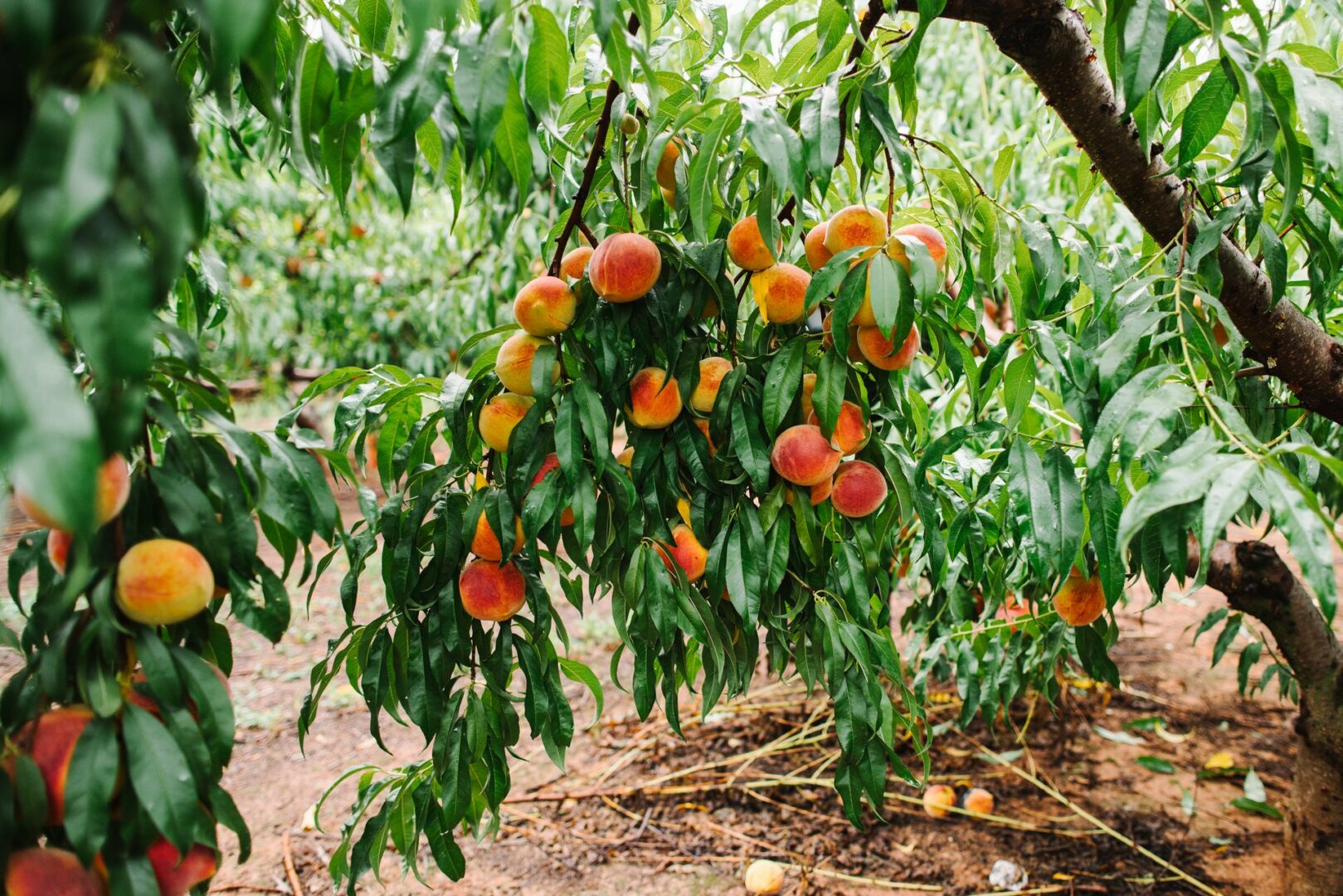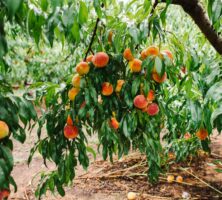Horticulture is a significant and expanding component of agriculture in Georgia, ranking second only to the production of poultry. This industry represents production, processing, and marketing of vegetables, fruits, nuts, trees, flowers, and shrubs. Horticulture also includes such service trades as florist shops, landscaping services, and garden centers.
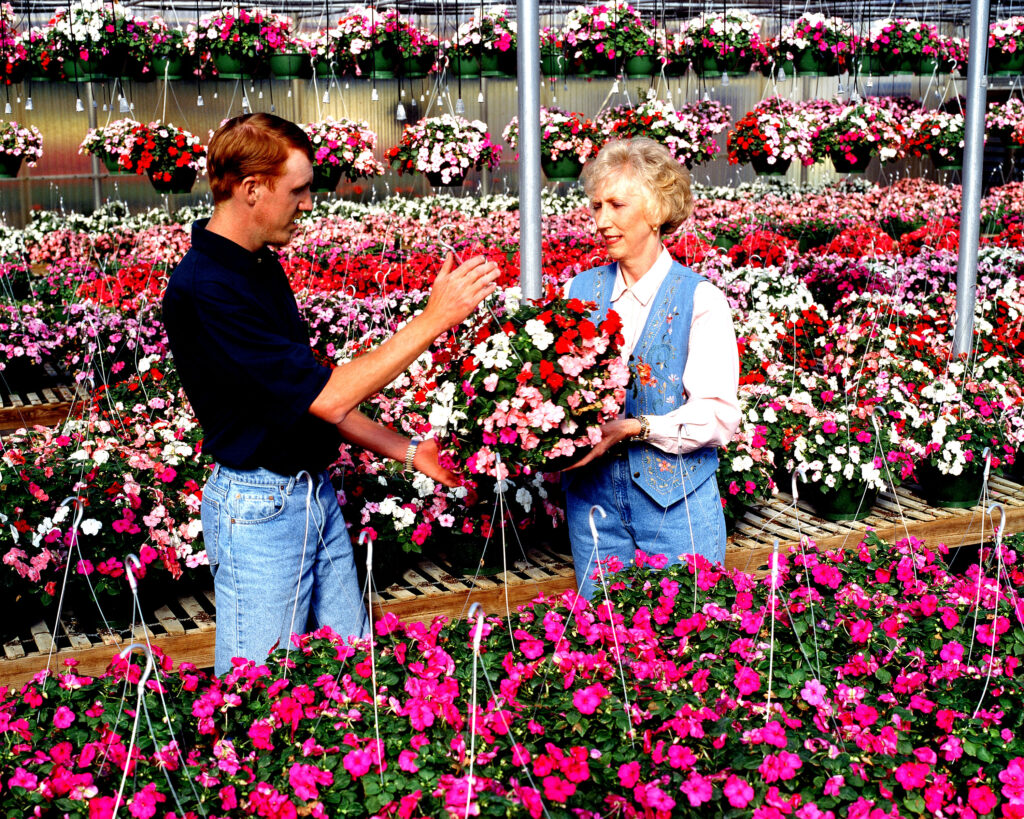
The diversity of horticultural products grown in our state is extensive, given its varied climates and soil types. The cool valleys of the north Georgia mountains are excellent for apples, cabbage, sweet corn, and muscadine grapes. The long growing season and warm sandy soils of the Coastal Plain in the southern part of the state are ideal for most vegetables and fruits, including tomatoes, peppers, watermelons, and squash. The central Piedmont’s sloping hills and clay soils are good for in-ground production of ornamental trees and shrubs and for the production of peaches.
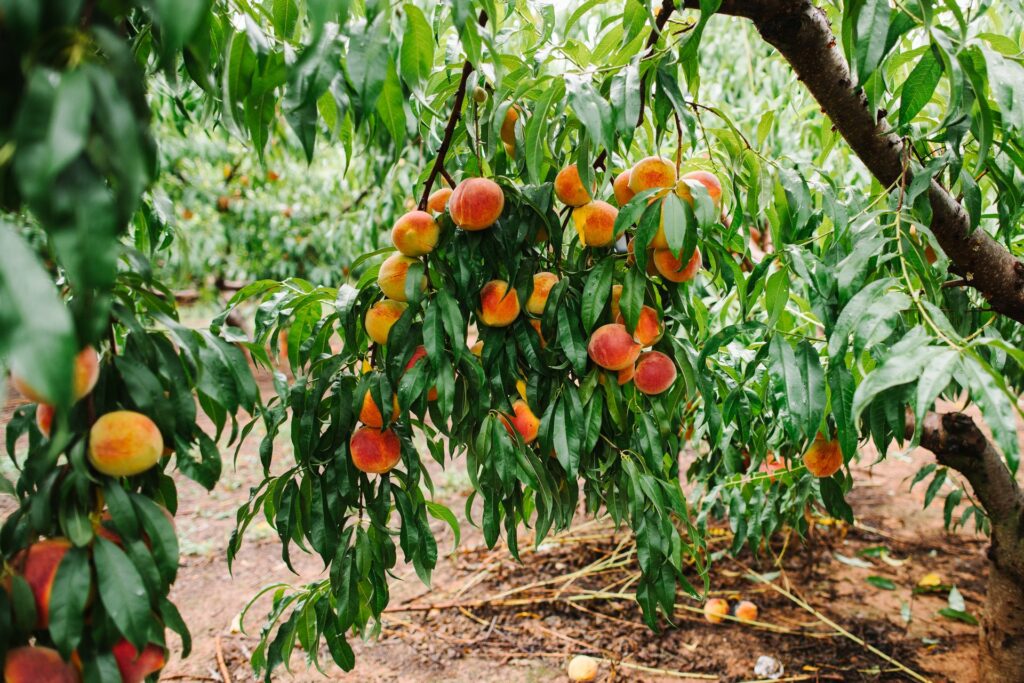
Courtesy of Explore Georgia.
Greenhouses and container nurseries have sprung up in almost every county in the state because of greatly increased demand from urban markets. They produce herbs, bedding plants, vegetable transplants, and perennials.
History
Development of horticultural products has a long history, beginning with the first settlers that came to Georgia. The first colonists depended upon locally grown produce and selected seeds from plants that yielded well. Seeds of vegetable, apple, melon, corn, and squash varieties were handed down generation to generation, shared between families, and maintained. This practice extended through the 1950s, making the culture of vegetables and fruits a staple activity for most rural Georgia families. Many of these original lines, now known as heritage varieties, are still grown by gardeners interested in history or are maintained in breeding programs geared toward developing plants tolerant of Georgia’s climate.
Floriculture, or the science of growing flowers, has had an interesting history since the beginning of the 1800s. During the Victorian era flowering houseplants, indoor terrariums, and extensive perennial gardens became popular. Use of bedding plants such as marigolds became widespread in the late 1940s, after World War II (1941-45). In the 1970s, as interest in the environment grew, houseplants again achieved phenomenal popularity. By the mid-1980s the use of pansies for winter color became so extensive in Atlanta, and later statewide, that it nearly doubled the incomes of most greenhouse owners. Another trend is a return to the use of perennials, and the market now has more than 1,200 cultivars to choose from.
Horticulture’s Value to Georgia Citizens
The combined current economic value of horticulture is more than $2.4 billion. The vegetable segment is by far the fastest growing and the largest, representing more than $635 million in farm gate value (the value of a product when it leaves the growing site), a sixty-three-fold increase over the last thirty years. The fruit and nut segment of the industry produces pecans, peaches, and other fruits, which generate more than $210 million in farm gate value.
Perhaps most visible to the average citizen, the greenhouse and nursery segment is also growing rapidly, along with housing starts, large chain home-improvement stores, and an awakened interest in gardening. The farm gate value for greenhouse, nursery, and turf production is well over $516 million annually. The horticultural service industry, which represents retail florists, lawn care services, and landscaping and garden centers, generates more than $1 billion annually. Overall, the horticulture industry has expanded fifteen-fold since 1970, making it one of the few consistently profitable segments of agriculture in Georgia, and one in which even small family-owned businesses can still thrive. Georgia’s excellent airports and highways make it possible to ship products worldwide.
New, Emerging Crops
The diversity and profitability of Georgia horticulture continues as many crops are emerging that promise to bring sustainable incomes to the state’s farmers. For example, the blueberry industry was almost nonexistent in the 1970s, but since the discovery of sandy, acidic soils in south Georgia, it has become a multimillion-dollar endeavor. Carrots are emerging as an important crop in southeastern Georgia, where the soils are perfect for production of high-quality specialty carrots. Vidalia onions are a good example of how farmers were able to capitalize on the unusually low sulfur content of some southeastern Georgia soils to produce and market a mild onion that does not bring tears to the eyes. New crops such as wine grapes, Christmas trees, and native plants for landscape use are also appearing in north Georgia.
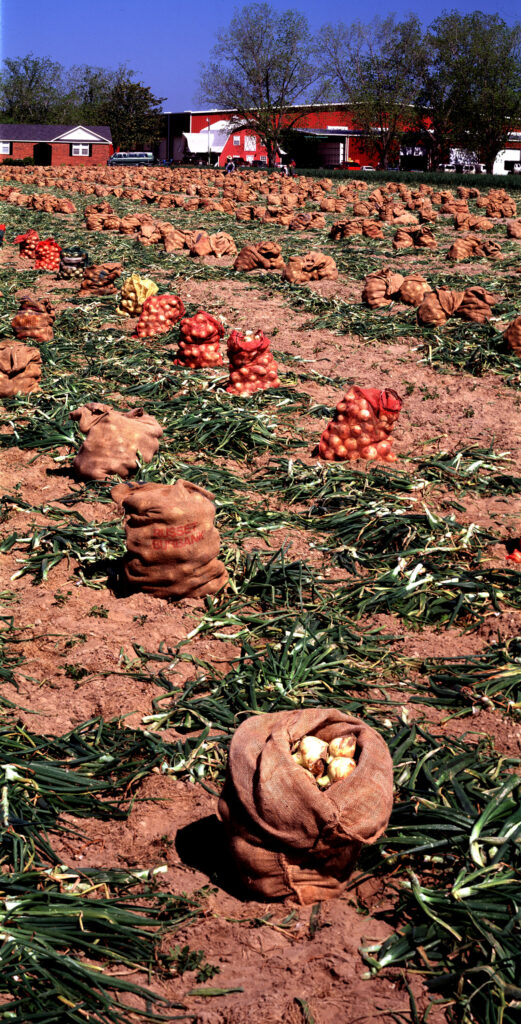
Industry Challenges
As in any agriculture-based industry, challenges face the growers who produce these plants. Finding people willing to work in hot fields is now difficult, and the resulting labor shortage is seriously affecting this industry. The low cost of food in the United States, which allows very slim profits, prevents the producers from paying larger wages to attract workers. Recurring droughts in Georgia have raised concerns about the use and availability of consistent water sources, on which horticulture depends. New federal requirements and a nationwide effort to minimize the use of pesticides have made controlling insects and diseases a challenge as well. Horticulturists would like to avoid pesticides altogether, but most consumers expect blemish-free fruits and insect-free vegetables and flowers. The standard of perfect produce may not be sustainable, given the rapid removal of many pesticides from the market. Growers will have to be innovative to meet market expectations.
Institutional Bases
These challenges are being met by the combined efforts of several institutions. The Georgia Department of Agriculture as well as the College of Agricultural and Environmental Science at the University of Georgia are actively working with the industry to address these issues. There is a great need for more professionals, however, because horticulture’s reach is vast and complex. The University of Georgia has formal college programs in horticulture that range from greenhouse production to molecular transformation of vegetable hybrids. The Georgia Department of Education has developed a strong program for high school students who wish to gain experience in commercial horticulture. Homeowners and gardeners can learn more about horticulture through the Georgia Master Gardener Program, which offers horticultural training to volunteer gardeners. Master gardeners aid local county extension agents by educating local communities about such gardening practices as composting, environmental gardening, and community gardens.
Geneticists are needed to breed new cultivars. More trained growers are needed. Agricultural economists are needed to help growers estimate control costs and manage profits. Agricultural engineers are needed to help automate production to relieve the labor shortage. Skilled business and management graduates are needed to help growers market new products. Plant pathologists and entomologists are key contributors to developing environmentally sound ways to control pests. As the population in Georgia continues to increase, the field of horticulture will continue to expand for many decades to come.






